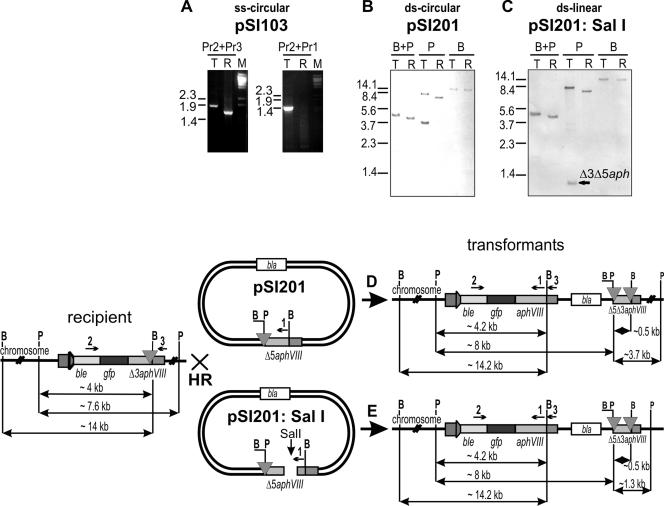FIG. 2.
(A) PCR analysis of the recipient (R) and transformant (T); generated with single-stranded linear DNA (Pr-aphVIII-3′-rbcS2; Table 1, no. 5), which shows the repaired aphVIII gene. Primer positions are seen in the lower part of the figure: The product generated with Pr2+Pr3 indicates the increased size of the gfp-aphVIII region within the transformant. The product generated with Pr2+Pr1 indicates the repair of the 3′-aphVIII gene by insertion of the formerly missing 175-bp fragment. Pr1 does not anneal to the DNA of the recipient T61-9. (B and C) DNA blotting of transformants resulting from transformation of the T61-9 strain cells with circular double-stranded promoterless ds-Δ5′-aphVIII (ds-pSI201) (B) and linear double-stranded promoterless ds-Δ5′-aphVIII (ds-PSI201:SalI) (C). Total genomic DNA was cleaved with BamHI (B) and/or PstI (P). The bands are explained by the fragments defined for panels D and E. The blots were probed with an ss-DIG-labeled DNA covering the complete gfp-aphVIII coding sequence of 1,514 nucleotides. (C and D) Schematic representation of the integration loci in transformants analyzed in panels B and C. bla, ampicillin resistance gene.

